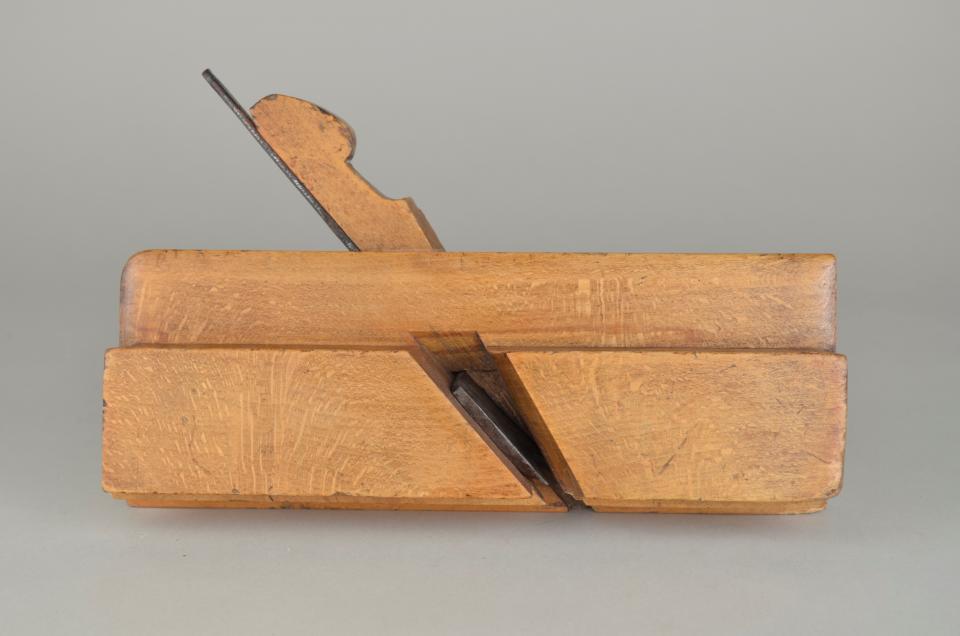
L: 23.5cm W: 5.0cm H: 14.3cm
a- L: 23.5cm W: 5.0cm H: 8.0cm
b- L: 15.1cm W: 2.2cm H: 1.0cm
c- L: 18.2cm W: 3.0cm H: 0.4cm
A wooden bead plane consisting of 3 parts.
a- The body is rectangular and made of a light brown hardwood. A cheek protrudes from the bottom half of the front body. The throat cuts through the centre of the body and is exposed through the cheek. The sole is curved concavely to match the cutting iron. A short fence on the front side of the sole protrudes out to complete the curve. Stamps on the toe read: " DRYBURGH/DUNDEE"; "I BLOWER". Stamps on the heel read: "I BLOWER"; "7/8".
b- The wedge is made of the same hardwood as the body. It tapers to a blunt point on one end and is rounded on the other in an oval shape. A small cut-out below the head allows for easy handling.
c- The iron is a narrow strip of grey metal. It abruptly widens near the cutting edge. The cutting edge consists of a parabolic curve slightly off-center from the handle. The width of the cut is 7/8".
Bead planes are used to put a bead, or a convex groove, into a workpiece. They are considered molding planes. Beads can be put into any straight piece, but are popular in tables, shelves and doors.
